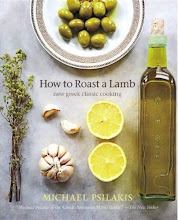 The very knowledgeable owners of the spice store relayed a few historical facts about grains of paradise. They are commonly used in the cooking styles of West Africa and North Africa, where they have been traditionally imported via caravan routes through the Sahara desert.
The very knowledgeable owners of the spice store relayed a few historical facts about grains of paradise. They are commonly used in the cooking styles of West Africa and North Africa, where they have been traditionally imported via caravan routes through the Sahara desert.In Europe, it was often substituted for black pepper--until Vasco da Gama reached India in 1498 and replenished supplies of black pepper. The seeds were first named "Grains of Paradise" in the Middle Ages, when they were enjoyed as flavorings. They were often used throughout history to flavor alcohol. In fact, while England's Queen Elizabeth I used the grains for spicing wines and strengthening beer, King George III later declared the practice illegal and issued a heavy fine on any brewer who possessed the grains--as well as any druggist who sold it to a brewer.
In the Caribbean islands, natives use the seeds for medicine and in voodoo rites. West Africans use the spice as a flavoring, but they also chew the seeds for their warming and digestive properties.
Grains of paradise or Aframomum Melegueta is commonly referred to as alligator pepper, Guinea pepper or Melegueta pepper. Wade into the swamps of the West African "pepper coast," and you'll find this herbaceous, leafy perennial. Its trumpet-shaped, purple flowers develop into 5 to 7 cm long pods containing numerous small, reddish-brown seeds. The Melegueta plant is not related to the pepper vine but is a member of the ginger family. The sphere-like seeds of Grains of Paradise look very much like cardamom seeds. (Cardamom is also a member of the ginger family.)
The seeds have a pungent, peppery taste due to aromatic and essential oils, which are the dominating flavor components. They provide a warm spicy bite with slightly bitter overtones. The flavors are reminiscent of cardamom and coriander.
 A New York Times article written by Amanda Hesser has popularized grains of paradise. She wrote, "I put a few between my teeth and crunched. They cracked like coriander releasing a billowing aroma, and then a slowly intensifying heat, like pepper at the back of my mouth.
A New York Times article written by Amanda Hesser has popularized grains of paradise. She wrote, "I put a few between my teeth and crunched. They cracked like coriander releasing a billowing aroma, and then a slowly intensifying heat, like pepper at the back of my mouth.The taste changes in a second.
The heat lingered.
But the spice flavor was pleasantly tempered, ripe with flavors reminiscent of jasmine, hazelnut, butter and citrus, and with the kind of oiliness you get from nuts. They were entirely different from black peppercorns and in my mind, incomparably better.”
 That summer, I took home my first jar of grains of paradise and have been exploring its uses ever since. I love to use grains of paradise in soups and salads, stews and pastas to give my usual fare a bit of different kick. So far my favorite way to use grains of paradise, where I find that their flavor really shines is as a finishing spice on fresh vegetables and pan seared cod fish or scallops. The pepper elevates and enhances the pure flavors of fresh clean food to an make it an extraordinary meal...if you will, this pepper will elevate it to paradise.
That summer, I took home my first jar of grains of paradise and have been exploring its uses ever since. I love to use grains of paradise in soups and salads, stews and pastas to give my usual fare a bit of different kick. So far my favorite way to use grains of paradise, where I find that their flavor really shines is as a finishing spice on fresh vegetables and pan seared cod fish or scallops. The pepper elevates and enhances the pure flavors of fresh clean food to an make it an extraordinary meal...if you will, this pepper will elevate it to paradise.If you want to try Grains of Paradise, grains of paradise are available here.









8 comments:
Two words... THANK YOU!!
I have been looking for Grains of Paradise for awhile. Since Alton mentioned them. I have yet to find a good source to purchase.
Thank you, Terrie!
De rien, (you are welcome) cher Lisa. I am glad I could help.
Hope that you enjoy using the grains of paradise.
Anything for AB's #1 fan...!
Hope you are well dear friend with not much snow. It is snowing hard here as I write.
Have a lovely week...:))))
These photos make me want to go to school to become a chef. Don't you just love the name "the grains of paradise?" No wonder Christopher Columbus set sail to find all those wonderful spices. Wonderful, Terrie!
ps
we got a few inches of snow here, too, Terrie--two snows in one year is a lot for NC!
Hello there Ms. Terrie, What wonderful flavorings! I'll have to keep an eye out at the local ethnic stores for them... the way you describe them they sound ... heavenly ! :) Thanks for the culinary tip!
Barbara
Thank you for the introduction...I seldom read about something totally new to me! I'm going to give them a try!
Merci mille fois for all these great comments...I am so pleased that you like this post Lisa, Sue and Barbara (and my peppery images...lol...)
You all are indeed kind.
I think this is close to cardamom (kardemumma in Swedish) (?), which is used a lot in Nordic recepies, but obviously cardamom is a substitute. This is what you really should use!
Post a Comment